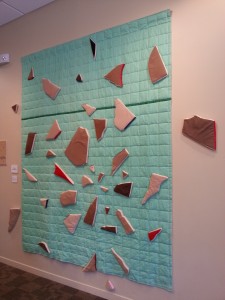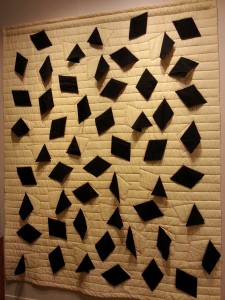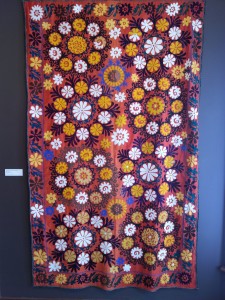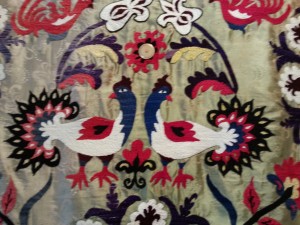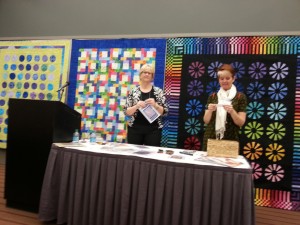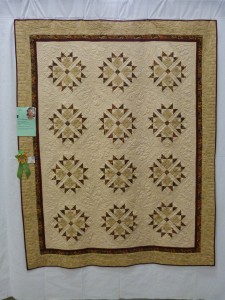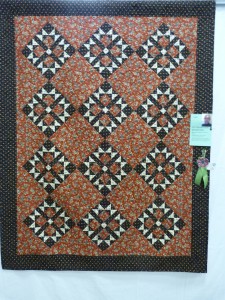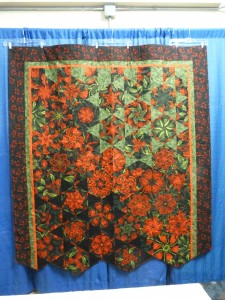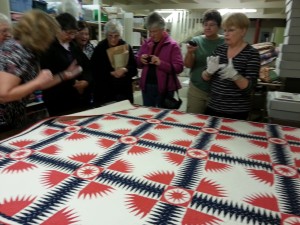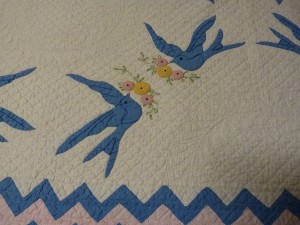Continuing from the last blog on my visit to the San Jose museum, here’s a small sampling from another exhibit entitled North California Inspirations. The exhibit reflected the visions of twenty Northern California textile artists inspired and influenced by the diverse and visually rich region where they live. Here are four of the quilts that particularly resonated with me.
Urban Reflections by Ann Sanderson is on the left. Ann hand-dyes her own fabric and likes collecting just the right fabrics to express her ideas. The piece seemed to shimmer and I could see the lights reflecting on a wet surface. On the right, Turbulence by Pat Durban. This mosaic of fabric is covered with tulle overlay and embellished with rocks from the beach, beads, and tiny marbles. One of Pat’s favorite places is Agate Beach in Northern California, where the waves crash against the rocks. She likes to capture this mood in her work.
The three dimensional effect of Morning Mist, San Joaquin Valley by Sue Siefkin was stunning and Sue’s quilt really captured the atmosphere perfectly. She used hand-dyed and commercial fabrics, and textile paint to create this raw edge, fused collage. Breeze II by Jenny K. Lyon was beautifully composed and executed to create the feeling of the gentle motion of the grass. Jenny used cotton and silk thread for the machine quilting on cotton sateen.





